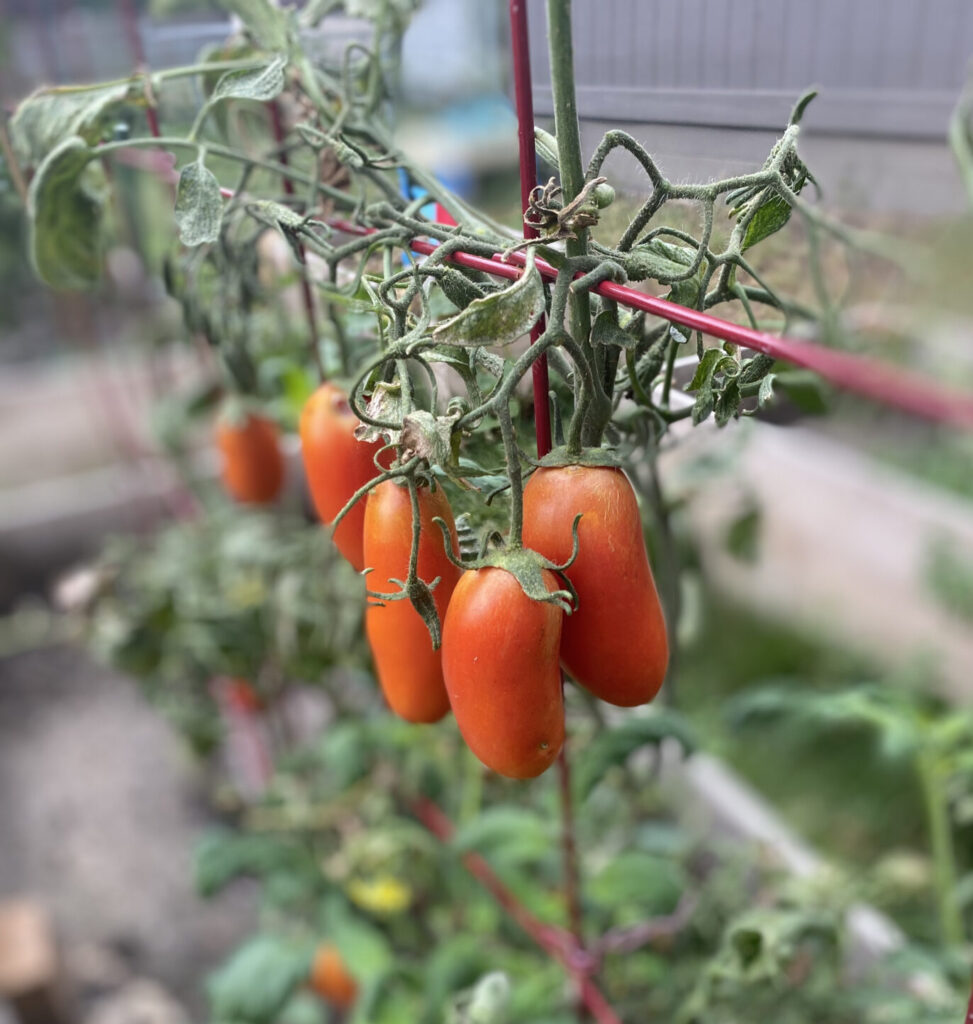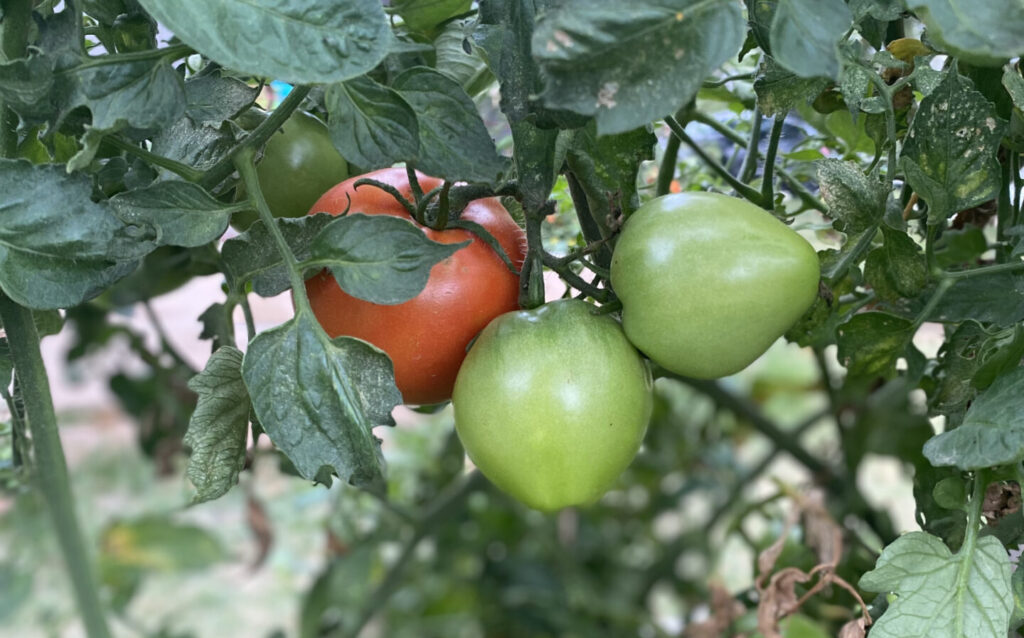This post may contain affiliate links, meaning we may earn a commission for purchases you make, at no cost to you.
Prior to 2021, our crew had very little gardening experience. Aside from a few sporadic attempts to grow kitchen herbs and potted tomatoes, we entered this season with nothing but seed packet directions, some tidbits of advice from Facebook groups, and a bit of know-how from watching our grandmas. Facebook groups and grandmas are a great place to start, but nothing beats the experience of doing. We jumped into our first year of raised bed gardening knowing that we’d make some mistakes, and fully prepared to learn as we went along.
We’re quite pleased with how much we did right, but – as expected – we learned a myriad of things the hard way. Some snafus were simply an issue of timing. Others, a blatant lack of experience. We’ll share both, in addition to some of our victories, to help motivate and guide you in your own newbie garden preparations for next spring. If you’re a gardening pro…well… Don’t roast us too hard, please!
**Note: Some of these are specifically relevant to gardening in raised beds, while others are general gardening tips.

Raised Bed Gardening: Things We Learned the Hard Way
- Have a Plan, and Have a Backup
We moved into our house at a very unfortunate time for gardening preparation. Indoor seed sowing for most fruits and veggies begins about 6-10 weeks before the last frost. In Nebraska, the last frost is the middle of May (ish) so this forced us to start some of our seeds at our old house. Transferring them to the new place proved to be disastrous – between being jostled in the car, and away from their grow light for an entire day, none of our seedlings survived the trek.
We had no backup plan for this, and it interfered with how we laid out the garden beds. Instead of mapping out each bed, we planted randomly. By midsummer, we realized the enormity of our mistake. All gardens should be organized, but when using raised beds you especially have to take into account how much space your plants will take up, lest they block out whatever else is in the bed alongside them. We learned the hard way that zucchini will rapidly smother slower-growing plants and spill into the lawn (and other garden beds!) Much zucchini and much disappointment were had over this mistake.
- Label Better
There were a great many “mystery plants” in our garden this year. With ten beds, and four people doing the planting, several areas got seeded with more than one thing. One spot wound up with both radishes and green beans. They grew scraggly and tangled until they choked each other out, and both plants died.
Lenny enjoyed the plant scraps, and we enjoyed arguing with each other over who the heck messed it all up (we still have no idea) but that was a big loss to a good chunk of planting space. Next year we’ll be sure to make a master plan and label each plant.
- Know When to Plant
After our initial indoor seed sowing ventures flopped, we went with the ol’ “Slap Our Seeds in the Ground and See What Grows,” method. We didn’t take into account that by the time we started planting, cool weather crops like broccoli and lettuce weren’t likely to be ready before it got too hot. The first rounds of those fried quickly in the summer heat.
We did successfully plant some late-season lettuce that’s turning out quite nicely, though!
- Support Support Support
This was the one mistake that we made that has no relevance to “Operation Move Our Seedlings Across Town” catastrophe. When gardening in raised beds, your plants are about a foot and a half off the ground, which makes a difference in terms of wind and spread. We started out supporting only the tomatoes – because, duh, tomatoes need support. We didn’t think about how the extra height would impact any other plants.

Adding support to the runaway watermelons and windblown peppers was rather a challenge to do after the plants had produce on them. We had some pretty intense windstorms – because Nebraska – that took a toll on our plants. Our neighbors with in-ground gardens didn’t have nearly as much damage as us, and we attribute it to that teeny bit of extra height and lack of support.
Next year we’ll get our supports in place before anything starts to grow too tall.
Raised Bed Gardening: Success!
- Soil
We purchased a topsoil + compost blend specifically designed for raised bed gardening and were extremely pleased with the quality. Aside from eggshells in the tomato beds to prevent blossom end rot, we made no amendments and had no issues resulting from soil quality.
This soil (and the mulch for two of our native gardens) came from Maple 85. If you’re in the Omaha area, we’d definitely recommend checking out their product lines.
Since this post was written, we’ve switched to products from Soil Dynamics which we like even better!
- Water
Consistent watering is critical to maintaining a healthy veggie garden! Oddly enough, this was one of our biggest worries. Keeping up on watering with all the ADHD spazz brains could have been a disaster! It turned out to be a non-issue because the chickens have to be watered and let out in the mornings anyways. Whoever did that just watered the garden while they were outside.
- Sturdy Beds
We LOVE our raised beds. We found a local guy on Facebook Marketplace and ordered them just before we moved. He delivered them and plopped them in the lawn for us and everything! They give our garden a very neat and organized look. It also allows us to have total control of the soil, which is nice because the soil in our lawn is total trash. There was no need to rip out the lawn, either, we just placed the beds on top of the grass.
Our property was poorly maintained before we bought it, so there was a plethora of yard waste to place in the bottom before adding our soil mix. We’ll simply add compost and new soil as needed each new season.
Reminder for Omaha residents, Hillside Compost Club provides free garden products to members!
- Weeding
I know everyone complains about it, but I think weeding is the best garden chore! I thoroughly enjoyed spending a few hours a week plugged into a good podcast, playing in the dirt. It got more challenging to stay on top of as the season progressed, but we managed quite well. We actually like having our garden out front, because it keeps us motivated to keep the area nice and neat. Backyard gardens can be all too tempting to let go a little wild until it’s too late to stay on top of because no one else can see them.
- Location
Our garden is placed in the middle of our full sun, south-facing lawn. It’s truly a veggie gardener’s dreamland. We started with ten garden beds, but have decided to make full use of the entire space by adding five more next year.
Takeaways:
All things considered, we’re quite pleased with our newbie-level garden. We got oodles of tomatoes, zucchini, peppers, herbs, and watermelon. Most of our mistakes that flopped our other plants were a simple result of our early season planting scramble. We just never quite got caught up on that. That’s okay though! We’ve learned, and we’ll do better next year. Gardening is best learned by doing, and we’re confident that we’ll continue making mistakes and learn from them as each year goes by.


Very well written and the best blog I have read all year! Nice job from an ADHD spazz!